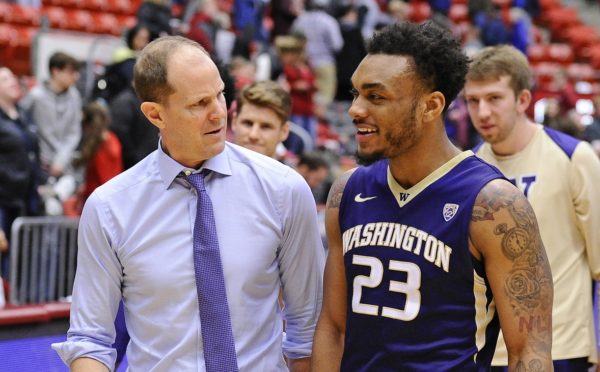Forecasting Washington’s Zone Defense
Posted by Adam Butler on January 18th, 2018No team in college basketball has played more zone defense this season than Mike Hopkins’ Washington club. As a Pac-12 aficionado, you know that the Huskies’ new head coach was a long-time assistant (21 years) of Jim Boeheim at Syracuse. As a college basketball aficionado, you know all about Boeheim’s famous zone defense. Hopkins has brought the defensive scheme across the country, and as a result, the Huskies have been a pleasant surprise through the first half of the season. Considering its uniqueness and Washington’s early success in employing it, a forecasting evaluation of the zone for the rest of this season is worthwhile. Its basic tenet is engineered to dare opponents to shoot from long distance. At Syracuse, 44.8 percent of shot attempts against its zone come from beyond the arc, which is very high (11th nationally). Washington’s opponents, by way of comparison, are allowing 36.7 percent of the shots against them from distance, roughly equal to the national average. This gap is in part related to the Huskies’ faster offense, clocking in with the 71st-swiftest offensive possession average in the game (compared with Syracuse’s 325th-slowest). This increase in allowing long-range shooting comes as a big change from the former regime in Washington. Lorenzo Romar’s Huskies never allowed more than 30 percent of opponents’ shots to come from beyond the arc.
Since Washington has seemingly announced its defensive strategy for the foreseeable future, how might the zone project on its new coast? To date, the gamble has paid off, as the Huskies through five conference games have “held” Pac-12 opponents to a league-best 27.9 percent from three-point range. Pac-12 teams are making 35.8 percent of their three pointers this year, 12th-best nationally as a conference. To try to understand what this might mean for Hopkins’ team, assuming he plans to continue to dare teams to shoot threes, the league has historically been average from distance. A peek:
| Season | Conference 3FG% | Conference Rank |
| 2018 | 35.8 | 12 |
| 2017 | 36.7 | 3 |
| 2016 | 35.7 | 11 |
| 2015 | 34.7 | 18 |
| 2014 | 35.0 | 14 |
| 2013 | 33.8 | 23 |
| 2012 | 34.6 | 15 |
| 2011 | 34.9 | 16 |
| 2010 | 32.6 | 30 |
| 2009 | 37 | 1 |
| 2008 | 35.3 | 14 |
| 2007 | 35.2 | 17 |
| 2006 | 35.1 | 14 |
| 2005 | 34.8 | 14 |
| 2004 | 35.9 | 7 |
| 2003 | 35.0 | 15 |
| 2002 | 35.7 | 7 |
Interestingly enough, the Pac has been relatively consistent in three-point shooting over the KenPom era, rarely deviating from a 35 percent average. Of course, three-point shooting has been on the rise both voluminously and effectively across the entire sport. Further, three-point defense is less about the opponents’ ability than it is about opportunity, meaning a defense can’t necessarily affect makes or misses as much as total attempts. Consider the recent Apple Cup. More than half of Washington State’s attempts have come from beyond the arc this season — third-most in the nation. Even sweeter, the Cougars make 39 percent of them (well above average). But against Washington? They attempted 27 three-pointers and missed 20. Washington won.
Time, naturally, will tell if this is an effective strategy in Seattle. But as more threes are attempted, perhaps the best strategy will be to say “be my guest.”










































